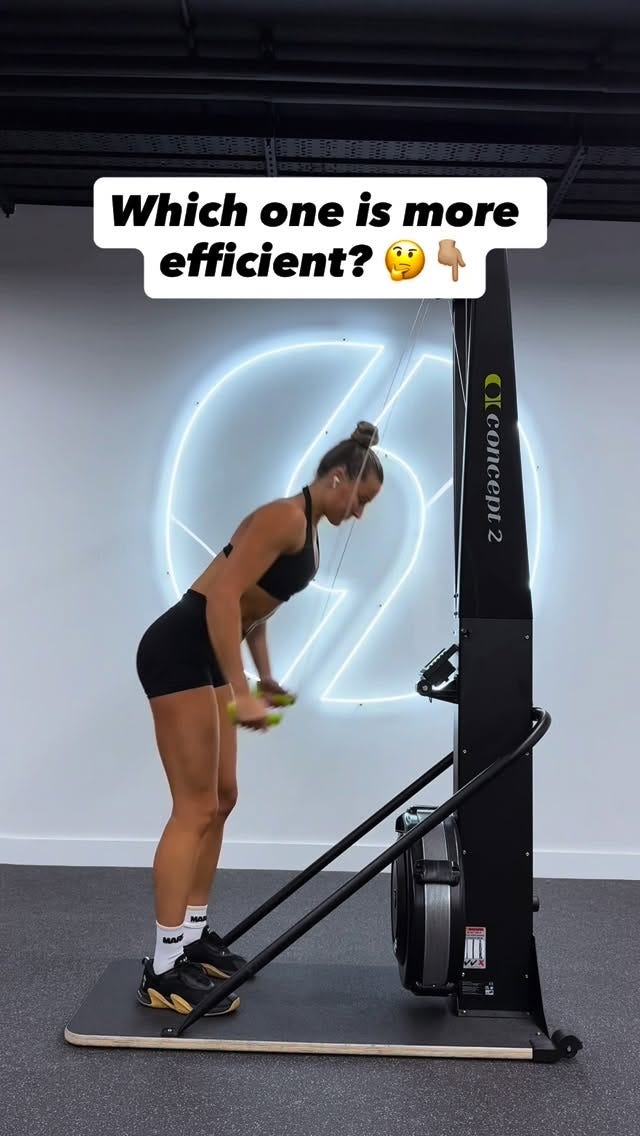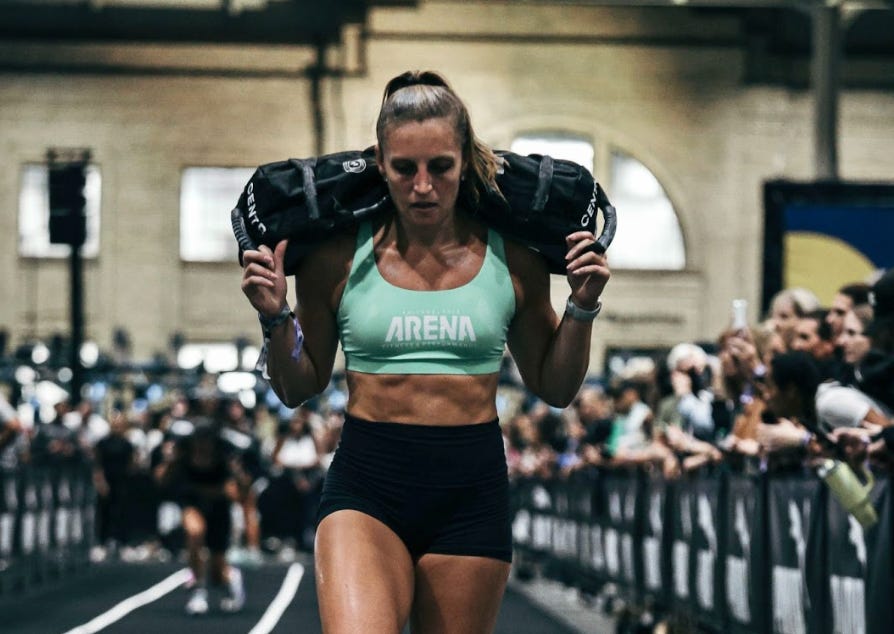Freeze, breath, recover: The new science of performance
Rachel Lee didn’t set out to become an expert in breathwork and cold exposure. After years of anxiety, medication, and burnout, an impulsive decision to join a stranger’s ice bath meetup in Mexico changed everything. The experience sparked a 100-day experiment that helped her taper off medication and rediscover calm through breath and cold.
Now, as the founder of Ice Bath Boston & Breath, Lee takes an evidence-based approach to helping people regulate their minds and bodies—from athletes chasing performance to anyone trying to steady themselves under stress.
The Hybrid Letter spoke with her about the science behind cold exposure, how to use it effectively, and why recovery isn’t one-size-fits-all.
This interview has been edited for length and clarity.
The Hybrid Letter: How did you end up dedicating your professional life to breathwork and cold exposure?
Rachel Lee: After graduating from Villanova with a teaching degree, I taught for a few years. It was rewarding, but I burned out. I’d been doing personal training part-time, and after COVID, I realized I didn’t have to stay in one place anymore. My partner and I moved to Argentina, where I ran an online strength and nutrition business. Then we spent a year in Mexico.
On my second day there, some people invited me to an ice bath meetup. I remember thinking, I just left freezing Boston for the tropics—the last thing I want is to get cold again. But I didn’t know anyone, so I went. We were on a dirt road in Tulum, standing around this beat-up plastic tub full of ice. When it was my turn, someone coached me on how to breathe and focus. I stayed in for six minutes.
In that moment, I felt something I hadn’t felt in years—deep calm, self-confidence, peace. When I was 18, just six days after graduating high school, I lost my boyfriend in a car accident. The trauma led to years of anxiety and depression, and I ended up on a cocktail of medications: one pill to wake up, three to get through the day, and another to sleep.
So when a random tub of ice water gave me everything I’d been chasing for a decade, I needed to understand why. I committed to a 100-day experiment—ice baths and breathwork every single day. Gradually, I started to feel better. I talked to my doctor about tapering off my meds, and within four months, I went from four prescriptions to one.
That’s when I realized this wasn’t just personal—it was a new direction. I started studying the science behind breath and cold exposure and built my practice from there. Today, I run a one-on-one breathwork and ice bath clinic outside Boston, working with people on anxiety, panic disorder, and athletic performance. For me, these tools are a bottom-up way to reconnect with your body, regulate your mind, and move toward whatever goal you’re chasing.
The Hybrid Letter: For athletes, what are the main benefits of ice baths?
Rachel Lee: I like to think of ice baths as a practice stressor—a safe, controlled way to train your body and mind to handle curveballs. The cold immediately triggers your fight-or-flight response, and in that moment, you have to convince yourself to stay calm. It’s a mental reset.
Physically, the effects are just as powerful. Cold constricts your blood vessels; when you get out, they dilate again. That cycle helps flush waste products and lactic acid and gives you a big circulatory boost. It also elevates mood and focus through endorphins, dopamine, and adrenaline—all those feel-good, energizing chemicals.
And of course, it’s great for pain and inflammation management. The cold slows nerve conduction velocity, so it actually dampens pain signals for a while. That effect is temporary, but it’s incredibly helpful after hard training or competition when soreness and fatigue spike.
The Hybrid Letter: You often pair cold exposure with breathwork. How do they enhance each other?
Rachel Lee: Breathwork amplifies everything. It’s not just about oxygen—it changes how your whole body functions. When you train your breathing mechanics, you can run faster at a lower heart rate and even reduce injury risk.
The diaphragm, your main breathing muscle, also stabilizes your core—it actually contracts about 20 milliseconds before any movement. So when you improve how you breathe, you’re literally improving how you move.
Breathwork can also target different goals. Hyperventilation training clears a busy mind and prepares you for higher training volumes. Hypoventilation helps build tolerance to lactic acid. And slower, paced breathing—like five seconds in, five seconds out—activates recovery and calm before or after tough sessions.
Even in endurance sports like running or rowing, syncing your breath rhythm with movement can make you noticeably more efficient.
The Hybrid Letter: How should athletes integrate breathwork without overdoing it?
Rachel Lee: It’s actually hard to overdo breathwork—but you can overdo ice. Ice is a hormetic stressor, so you want to build tolerance gradually, the same way you’d apply progressive overload in strength training. The same goes for sauna exposure. Don’t jump into extremes—work up to them.
With breathwork, start by focusing on mechanics during rest days or pre-training. There’s even a paper we published in Frontiers in Physiology that grades your diaphragmatic breathing from A to F. Striving for an A makes a big difference.
You can also do inspiratory muscle training—basically resistance training for your breath. Devices like PowerBreathe are like dumbbells for your diaphragm, and studies show they can improve endurance and longevity.
Before workouts, focus on CO₂ tolerance work to prep your body. Afterward, use slow breathing to speed recovery.
The Hybrid Letter: What’s the best way to approach cold exposure?
Rachel Lee: Two to three sessions a week is plenty. I love pre-cooling—I used to have an ice bath right in my apartment, in front of the TV. When I moved in with my now-husband, I told him, “I come with an ice bath.”
Pre-cooling can extend your endurance and delay fatigue, as long as you warm up properly afterward.
There are three main variables to adjust: time, temperature, and exposure. A recent meta-analysis found the best results for recovery come from medium durations (10–15 minutes) at 41–59°F. But the key isn’t to suffer longer—it’s to recover faster.
The real goal is bringing your heart rate down efficiently. That’s why I built an app to track parasympathetic recovery—how quickly your body shifts into calm. At its best, cold exposure isn’t about toughness; it’s about regulation. It’s almost meditative.
The Hybrid Letter: How much time in the cold or heat is actually needed to see results?
Rachel Lee: There’s great research by Susanna Søberg published in Cell Press showing what I call the “magical numbers” for thermal stress: about 57 minutes per week in the sauna and 11 minutes per week in the cold, ideally spread over three or four sessions.
Temperature matters, too—dry saunas run much hotter than infrared ones, so tolerance will vary.
If you’re doing contrast therapy, alternating between hot and cold, that’s the most intense form. It’s amazing but a big stressor, so start short—don’t jump straight into 20-minute saunas and three-minute ice plunges, repeated three rounds.
And always end on cold if you can. It boosts alertness and energy. But keep your total stress load in mind: if you’re underslept, traveling, or peaking for a race, those are already stressors. Adding extreme temperature work on top can push you too far. The goal is to make these tools work for you—not to survive them.
The Hybrid Letter: Do men and women need to approach cold exposure differently?
Rachel Lee: That’s a popular question. Stacy Sims, who does amazing work in female physiology, often says women may not need to go as cold—and that’s based on mechanism.
The body produces heat two ways: through brown adipose tissue (which generates heat instead of ATP) and through shivering. Women tend to start shivering sooner—that’s really the main difference.
So, yes, women might not need as cold of temperatures, but there’s no strong evidence showing major differences in benefits or comfort levels between men and women. It’s mostly individual.
Some women I work with don’t get that endorphin rush unless the water’s around 40–45°F because they’ve built up such strong conditioning. For beginners, I start easy—maybe just sitting on the edge in scuba booties—and we work toward full immersion, lowering the temperature gradually. Once they build tolerance, they feel amazing.
The Hybrid Letter: Some athletes say they avoid ice baths because they don’t want to blunt muscle growth. Is there truth to that?
Rachel Lee: This is one of the biggest debates. Strength training causes microtears in your muscles so they can rebuild stronger. Cold exposure reduces inflammation, so the concern is that cooling down right away might interfere with that process.
But when you look at the research, results are mixed. Some studies show a tiny decrease in hypertrophy; others show none. Overall, it evens out to a net zero.
If you want to be cautious, just wait about four hours after a heavy strength session before getting in the cold.
For hybrid athletes, it’s a different story—because you’re combining strength and endurance work, cold exposure can actually be a huge recovery boost.
It’s also worth remembering that cold exposure spikes adrenaline slightly. So timing matters: morning or midday is great for energy, but right before bed, it can make it harder to wind down.
As with most recovery tools, it’s about knowing your body and using it in a way that supports—not sabotages—your goals.
You can follow Rachel Lee on Instagram or learn more about her work at Ice Bath Boston.
Tip of the week: SkiErg like the pros
Of all the exercises in a Hyrox race, the one where form varies the most is the SkiErg. There are many theories about what kind of stroke is most efficient.
On Instagram, coach Katty Weymouth demonstrates two contrasting techniques: one with longer, more powerful strokes and another with shorter, quicker strokes. Katty argues that elite cross-country skiers have figured out that shorter strokes are more efficient. Shorter strokes “keep the flywheel alive and your pace smooth.” She suggests a cadence of 40–50 strokes per minute, with stronger athletes at the lower end and smaller athletes at the higher end.
Athlete of the Week: Haley Smith
Name: Haley Smith
Age: 33
Hometown: Philadelphia, PA
When did you start hybrid training? Chris Beck, my coach and friend, opened his own gym in 2023—Arena Fitness & Performance—and introduced me to hybrid training, as well as Hyrox and Deka races. I loved it immediately. The training constantly pushes me to new limits. I played sports growing up and have always been competitive, so hybrid training gives me a way to keep being an athlete at this stage of my life.
Favorite race to date? The 2025 Hyrox World Championships in Chicago. The whole experience was incredible—being part of that event and racing alongside the best in the world. I had imposter syndrome the entire weekend but went into my first Pro Solo race just feeling lucky to be there.
Do you have a race goal? Next up is Hyrox Dallas—both Solo Pro and Doubles Pro. Ideally, I’d love to break 70 minutes in Solo Pro, though I’ve got some work to do! My partner and I are also racing our first Pro Doubles and hoping to match our Open Doubles PR of 1:05.
Favorite station? Probably the rower. It’s my most consistent station and gives me a chance to get my heart rate down a little.
Least favorite station? Lately, the sleds. The sled pull crushed me at Worlds, and then in Toronto, the sled push hurt more than usual. It can really be a toss-up—and the Pro-weight sleds just hit differently.
Something you wish you knew before you started racing? That progress isn’t always linear. Not every workout or race will feel great, and that’s okay. Each race teaches you something new about the sport and yourself. I wish I’d seen that more clearly early on.




